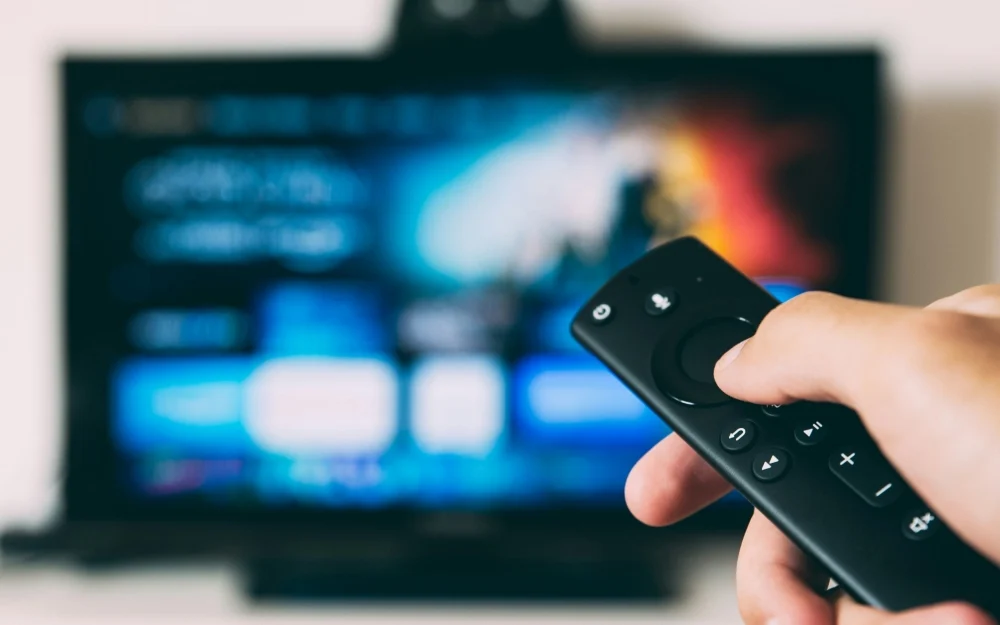Air Conditioner Upgrade Energy Savings Calculator
2 minute readHow much can you save with a more energy efficient air conditioner?
Home > BKV Energy Blog > All Posts > How Much Electricity Does Your TV Use?
4 minute read • Last update July 2024

Most modern TVs consume between 50 and 200 watts on average. The power usage of a TV depends on its type, size, and how frequently it’s used.
Here’s a quick breakdown of how power consumption and average wattage vary by TV type:
How much electricity does a TV use in 24 hours? That depends on how much time you and your family spend watching TV.
Let’s say you have a 100-watt model and watch TV for an average of 4 hours daily. In that case, your daily average will be:
100 watts × 4 hours = 400 watts per day
How much energy your TV consumes will likely vary throughout the week because most households use less power on weekdays when family members are out at work or school and more power at weekends. You’ll likely need to run a few separate calculations for how many watts you use at different times and add them together.
The easiest way to calculate monthly TV electricity usage is to work on a four-week cycle and round up for two extra weekdays and one weekend day. Let’s look at an example using the same TV wattage as above:
Monday to Friday: 5 x 100 watts × 4 hours = 2,000 watts
Saturday and Sunday: 2 x 100 watts x 6 hours = 1,200 watts
Weekly total: 3,200 watts
4-week total: 3,200 x 4 = 12,800 watts
Rounding: 2 x 100 watts × 4 hours + 1 x 100 watts x 6 hours = 1400 watts
Monthly total: 14,200 watts
Smart TVs typically use more electricity compared to conventional TVs due to their advanced capabilities and additional features, such as internet connectivity and streaming. However, experts suggest that there is not much difference in how much power a smart TV uses, primarily because it eliminates the need for a separate set-top box.
In terms of the total electricity consumed, TVs have a relatively low requirement compared to other appliances, such as:
Understanding the factors that reduce power consumption can help lower energy costs. Here’s a quick overview of the primary considerations.
TV power usage and overall energy efficiency are affected by screen size due to various technology and design features:
Generally, the energy consumption of older TV models (such as CRTs and early LCDs) is higher than modern LED and OLED models due to advancements in technology and design. These innovations allow newer models to consume less power while achieving comparable image quality and brightness levels.
Different manufacturers implement various technologies, design strategies, and energy-saving features, leading to notable differences in power consumption among TVs of similar size and type. For instance, Samsung’s QLED TVs use Quantum Dot technology to enhance color accuracy and brightness while maintaining energy efficiency. Sony also offers several models recognized as some of the most energy-efficient TVs in 2024.
While TVs are not the largest consumers of power compared to other appliances like dishwashers or AC units, their impact on your yearly electricity use can be significant. Televisions left on for several hours each day can contribute to electricity bills. Use the formulas provided earlier to calculate the daily and monthly usage and assess how this affects your electricity costs.
Investing in an energy-efficient TV can lead to significant savings on your monthly electricity bill. Here’s a list of the most essential qualities to look for:
Alongside monitoring TV electricity usage and other household energy consumption trends, choosing a more cost-effective utility plan can significantly lower your electricity bill. BKVE provides a range of high-quality options tailored for homeowners, with potential savings of up to $800 per year for Texans.
Explore our straightforward homeowner electricity plans by entering your zip code.
Graham Lumley, Digital Marketing Manager at BKV Energy, leads digital and traditional marketing strategies, focusing on educating Texans about the state's deregulated energy market. With over 8 years of marketing experience, he creates content to help consumers understand and save on their energy bills, bringing a fresh and dynamic approach to the industry.

How much can you save with a more energy efficient air conditioner?

Is it worth to pay the Early Termination Fee to switch electricity plans?
Get $50 off your electric bill!
Use code BKVEJOINUS50
Enter your zip code to shop BKV Energy's affordable, fixed-rate Texas electricity plans. Use the promo code for $50 off your electric bill.